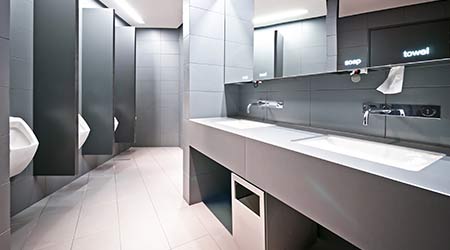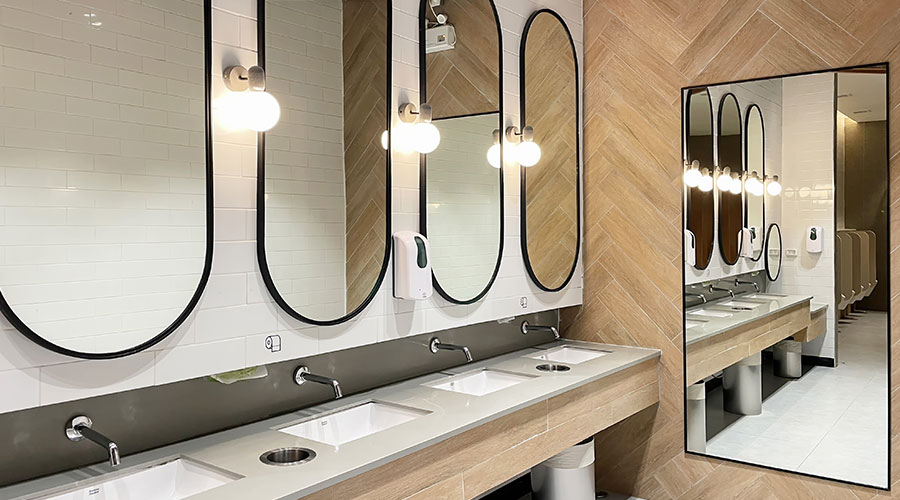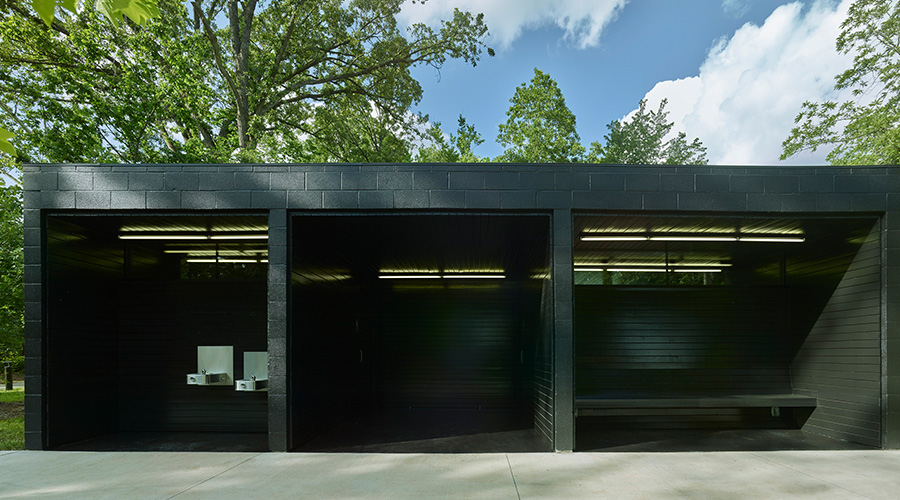 By understading product options, facility needs and user expectations, managers can deliver upgrades that benefit an organization's bottom line.
By understading product options, facility needs and user expectations, managers can deliver upgrades that benefit an organization's bottom line.Identifying the Goals of a Restroom Upgrade
Identifying goals and objectives of a restroom upgrade can help managers benefit an organization's bottom line
Beyond first cost
One essential step in the planning process for restroom upgrades is clearly identifying the goals of the project, and one of the most common goals of upgrades is bringing down water use and, ultimately, costs related to water use. To achieve these goals, managers will need to evaluate the impact of every element in the new restroom design — including ceilings, floors, plumbing fixtures, surfaces and finishes — in terms of its relative impact on the project’s success.
Perhaps the most common mistake that managers make when planning restroom upgrades is focusing on the project’s first costs. Over the life of most restrooms, first costs are small relative to the cost for long-term operations, cleaning and maintenance.
By focusing too heavily on an upgrade project’s first costs, managers also run the risk of producing a restroom design that does not produce long-term goals related to savings and hygiene. In many cases, even slight increases in first costs can result in very significant decreases in long-term operating and maintenance costs.
To develop a restroom design that will reduce operating and performance costs without breaking the budget, managers need to find a balance. This challenge is particularly difficult in restroom renovations, where managers must live with their decisions for the next 20 years.
The best way to overcome this problem is to use life-cycle costing. For any restroom project, life-cycle costs include the initial purchase and installation, as well as all operating and maintenance costs over the service life of the restroom.
Managers can use many different techniques to determine an upgrade’s life-cycle costs, but it is important to use a technique that covers every major component that is being installed in the restroom.
One caveat: The initial costs for many components selected for long-term performance will be higher. In fact, many components cost twice as much as conventional components.
But in most cases, the reduced operating and maintenance costs related to these products will help recover those additional costs within one or two years. A comprehensive life-cycle cost analysis will demonstrate this result, and it will provide the necessary balance between increased first costs and reduced operating and maintenance costs.
Related Topics:














